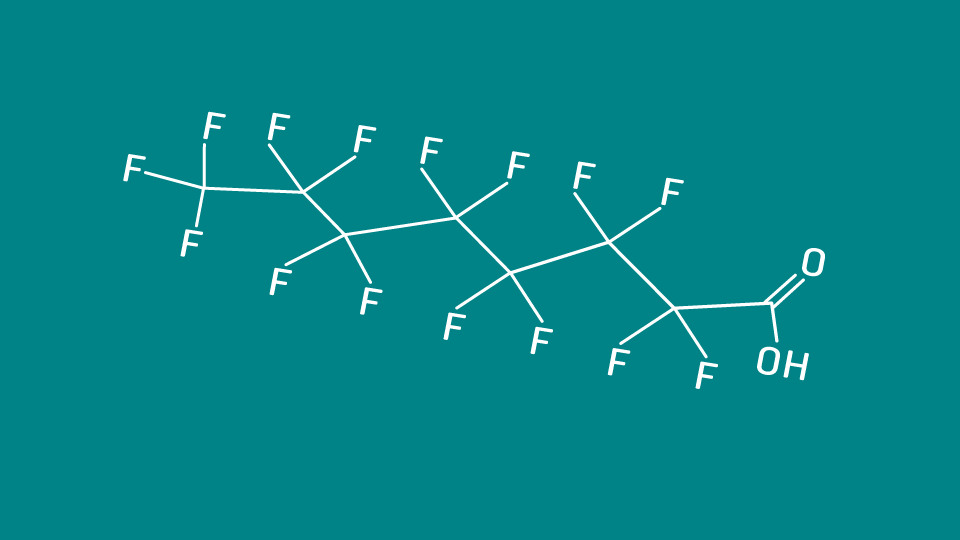
PFAS Q&A on research and development
Which purification technologies seem most promising? What does the proposal for a PFAS ban in the EU mean? Is it possible to completely incinerate PFASs? IVL has answers to your questions.
PFASs seem to be everywhere. Is there any point in doing anything?
It may seem hopeless, but we are working on PFASs because we believe an improvement is possible. First of all, we need to stop the influx of more PFASs by banning their production and use. There are already some regulations in place, and more are on the way.
Then we have the big problem of the PFAS substances that have accumulated over decades. There are many variants of PFASs, substances that can be transformed into specific PFASs and even unknown PFASs, and their mobility in the environment is a huge challenge. By identifying sources and hotspots and choosing the right clean-up methods we can make good progress, but of course, more research and development is needed.
Knowledge, analytical methods and proven technologies are already available and constantly evolving, so we have the tools. At the same time, it is important to have realistic targets. PFASs will inevitably remain in the environment in the future, but we can at least reduce the risks, and this is what we should aim for.
Which purification technologies seem most promising?
The techniques used today on a larger scale are activated carbon purification, ion exchange filters and foam fractionation. Membrane techniques such as reverse osmosis and nanofiltration can also be used. However, membrane techniques can rather be seen as a concentration method, which must be combined with other techniques. Also some of the other techniques may need to be combined with others such as activated carbon and ion exchange filters.
Can PFASs be broken down or incinerated?
PFASs are degraded by high-temperature incineration. There are other destruction methods, such as supercritical water oxidation, plasma treatment and electrochemical degradation. The methods that are commercially available in Sweden, or in neighbouring countries, are mainly high-temperature incineration and supercritical water oxidation.
However, there is considerable uncertainty as to whether PFASs are completely destroyed in the various processes and in the commercial facilities, or whether any harmful degradation products are created. The reactivation of activated carbon in commercial plants is also reported to destroy PFASs, but this has not been confirmed by actual measurement of possible degradation products.
What are the most important measures for a PFAS-contaminated site?
First and most important is to stop the dispersion, for example by excavating the contaminated soil or by building dispersion barriers. Next, treatment of PFAS-contaminated surface and groundwater is needed, to reduce downstream dispersion. Last but not least, measures are needed to prevent people and animals from being exposed to PFASs, mainly by preventing the consumption of contaminated food and water.
How difficult is it to clean up PFAS in the environment?
Remediation of PFAS is under development. There are now several proven methods for treating PFAS-contaminated water, but methods for soil remediation are still under development. Water remediation methods are generally effective for the most common longer PFAS compounds such as PFOS, PFOA and PFHxS, but for the shorter PFASs such as PFBA and PFBS, remediation is more challenging and much more costly.
The mobile properties of the substances mean that the pollutants are widely dispersed and thus extend far beyond the source, and can cause secondary damage to the environment. The toxicity of the substances also means that guideline and limit values are extremely low, which means that there is a need to compromise and develop site-specific guideline values. These compromises mean that the risks in the area need to be managed and monitored through environmental control.
When carrying out risk mitigation work in a PFAS-contaminated area, dispersion control measures should be taken as soon as possible, in order to manage the risks, while investigating appropriate ways to clean up the area around the source.
How significant is the proposal for a broad ban on PFAS in the EU?
The restriction proposal covers at least 10,000 different PFASs and all types of uses. As PFASs are used in a wide range of products and materials, a broad ban will affect many actors in different industries. The ban – if accepted – is expected to enter into force in 2026-2027, after which there will be a transition period of 18 months.
Some uses are exempted from the restriction, usually for a limited period of time, as there are currently no relevant alternatives. The documentation for the proposed restriction estimates the effect of the restriction to be a 95 per cent reduction in emissions of PFAS.
What does the proposal say about "essential use"?
The broad restriction proposal does not include the concept of "essential use". Criteria for what can be considered essential use, from a societal perspective, are expected at a later stage, as part of the work on the EU chemicals strategy.
